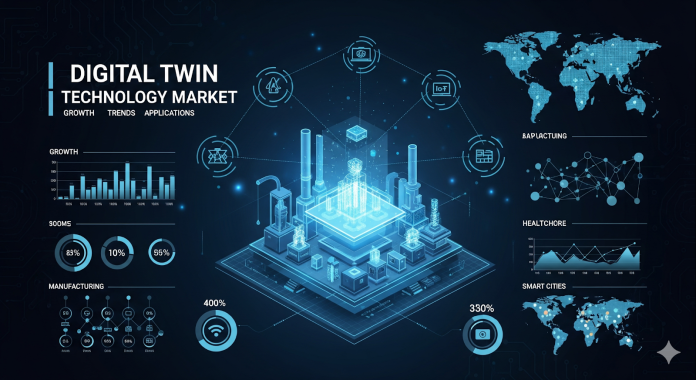Digital twin tech is the establishment of a virtual or digital replica of a physical item, method, or system that reflects live data collected from sensors, IoT devices, and other sources. The digital twin technology market expansion is majorly powered by the rising usage of smart manufacturing, the uptake of IoT and AI for live monitoring and predictive maintenance being the key factors. Such progressions make companies capable of cutting down their expenses, increasing their efficiencies, and raising their productivity.
Key Growth Drivers and Opportunities
Rising AI Adoption in LegalTech and Contract Management: With the popularity of Industry 4.0, the use of IoT, AI, robotics, big data, and automation has increased tremendously. This trend towards the implementation of these technologies allows manufacturers to have smarter and more connected systems.
The change is quite significant as it enables on-demand monitoring, forecasting of equipment failure, and self-directed actions thus, saving time, lowering expenses, and increasing output. Essentially, the revolutionary change is led by Digital Twin Technology that develops simulated versions of objects and procedures, thereby, enabling firms to verify, study, and improve the process without causing any disturbance in the physical circuits.
Challenges
One of the limitations that the digital twin technology market has is very high costs associated with implementation, along with the difficulty of integrating with already existing systems, security concerns about data, as well as the need for qualified personnel in the technical field, all of which discourage the use mainly by small and medium-sized enterprises.
Innovation and Expansion
Digital Twin Consortium Launches Digital Twin Testbed Initiative
In January 2025, The Digital Twin Consortium (DTC) has unveiled its revolutionary Digital Twin Testbed program, which allows members to demonstrate innovation in digital twin evolution. The effort provides DTC members with a collaborative, comprehensive approach to developing, testing, verifying, and validating digital twin systems, as well as advancing digital-twin-enabling technology.
The testbed program will help to provide a framework for assessing the maturity of essential digital twin capabilities using measurable key performance indicators (KPIs) for testing, verification, and validation.
Accenture Acquires Digital Twin Technology to Improve Banks’ Core Modernization Capabilities
In January 2025, Accenture has purchased Percipient’s digital twin technology platform for banks, which was built by the Singapore-based fintech business with extensive experience in banking technology transformation. The purchase strengthens Accenture’s current banking modernization capabilities, assisting financial services customers in Asia Pacific in accelerating the reinvention of their core systems, fostering innovation, and driving growth.
Integrating Percipient’s digital twin solution strengthens Accenture’s ability to assist banks in decoupling from legacy systems and embracing cloud and AI-driven financial services.
Inventive Sparks, Expanding Markets
Some of the key business growth strategies that employ digital twin technology are: using AI and analytics to create smarter simulations; expanding cloud-based solutions; building up relationships with other companies for mutual advantages; narrowing the focus to certain industry applications; allocating funds to the development of platforms that can work together seamlessly; and targeting new markets with 5G-enabled real-time applications.
About Author:
Prophecy is a specialized market research, analytics, marketing and business strategy, and solutions company that offer strategic and tactical support to clients for making well-informed business decisions and to identify and achieve high value opportunities in the target business area. Also, we help our client to address business challenges and provide best possible solutions to overcome them and transform their business.


